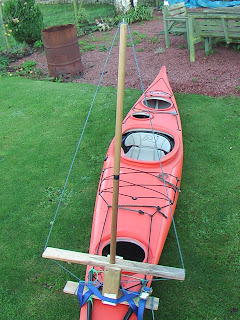In a hot and steamy basement loud music was playing, flashing lights and people dancing, but this was not a disco in the modern sense but a meeting of traditional musicians playing traditional music from Zamora. The music switched from dulzainas and gaita sanabresa, after a session of gaitas a man passed and said in a loud joking frustrating voice "gaitas! gaitas!"
i took him to mean the frustration of playing together and not being in tune with one another. Not that the dancers minded they were following the rhythms of the drums and castanets but melodies help and when it sounds out of tune it can be a bit hard on the ears! Dam Bach and Mozart...and all the others who have accustomed our ears to perfect harmonies. I think traditional music is one of the remaining forms what do not require perfect harmonic intervals...but it is changing and it is changing fast.
There was something primeval, organic and alive about this performance. Yes it was all out of tune with each other but after sometime the ears and the brain got accustomed to the it and melodies were still recognized. I remember during my M.A. an article about Bulgarian female singers who sang in a few isolated valleys sang with seconds...two notes sung as harmonies but not 'harmonically in tune' with each other eg. G and A.
The gaita players where playing the same notes but the pipes were micro-tonally out of tune with each other thus creating discordant pitches, as well as drones which where not in tune with the chanter nor the other drones. It was an amazing sound, loud, rhythmic, free-making. People were enjoying it, dancing to it and even I had a go...
I think the best instrument to annoy 'harmonic music lovers' is to play the Highland Bagpipes...they are very loud and can annoy listeners quite easy (as it did with my family relations), but there is something wonderful about it too.
As far as I can tell there is no fixed tuning or pitch with the gaita Sanabresa, it is an old instrument going back to Medieval time and possibly beyond, it has that feel about it. It does not have an equal-tempered scale. It plays in a minor scale but the 3rd flattened note is not exactly a 3rd, it is a little flat and so is the 6th note it is a little flat. It would be dificult to play with other modern instruments as they would be in tuned with an equal-tempered scale so they 'fit' harmonically and fixed to a certain pitch. But it makes sense when you play the drone as it would fit in perfectly with the harmonics of the drone.
Gaita Sanabresa can be found in a Bb, B, or C and perhaps other keys in between too!
This also complicates things when one tries to notate the music. As it is in a minor scale key signatures are used in the notation. C/Do minor has 3 flats, but the chanter has a sharpened 7th note, so the Bb would actually sound a B, but it is written without accidentals or a natural sign in the key signature.
The notation is only there for reference it seems not an accurate attempts to represent pitch of the music. There is some notation that is written with out any key signature at all thus making it a C major...but the chanter is the same as before it does not play in a different key with sharps and flats like the Galician (not that i can tell anyways). So the notation is only there as a reference.
On the internet I have tried to find a scale of the gaita Sanabresa written down but I was not able to find one.
So since I could not find a series of notes describing the scale I am going to attempt one now just to put something out there for people to see:
Starting from the bottom note with all fingers closed b, C, D, Eb (flattened), F, G, Ab (flattened), B, C
If any players can add to this I would be most grateful.






































